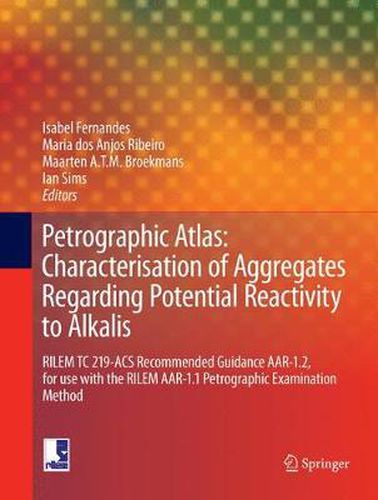Readings Newsletter
Become a Readings Member to make your shopping experience even easier.
Sign in or sign up for free!
You’re not far away from qualifying for FREE standard shipping within Australia
You’ve qualified for FREE standard shipping within Australia
The cart is loading…






This RILEM AAR 1.2 Atlas is complementary to the petrographic method described in RILEM AAR 1.1. It is designed and intended to assist in the identification of alkali-reactive rock types in concrete aggregate by thin-section petrography. Additional issues include:
* optical thin-section petrography conforming to RILEM AAR 1.1 is considered the prime assessment method for aggregate materials, being effective regarding cost and time. Unequivocal identification of minerals in very-fine grained rock types may however require use of supplementary methods. * the atlas adheres to internationally adopted schemes for rock classification and nomenclature, as recommended in AAR 1.1. Thus, rock types are classified as igneous, sedimentary or metamorphic based upon mineral content, microstructure and texture/fabric. * in addition, the atlas identifies known alkali-reactive silica types in each rock type presented. It also identifies consistent coincidence between certain lithologies and silica types; however, it refrains from attributing alkali-reactivity to a specific silica property or quality. * operator skill and experience remain essential for reliable assessment by thin-section petrography.
* aggregate materials must be classified according to local criteria, based on regional experiences with ASR-damaged field structures and geology. Access to additional data may be relevant for the assessment of imported materials. * mere application of rock nomenclature does not provide any sort of warranty to the development of deleterious alkali-reaction. Such may result in either rejection of a suitable aggregate material, thus wasting a valuable resource, or acceptance of an unsuitable material leading to concrete damage, both of which are undesirable.
$9.00 standard shipping within Australia
FREE standard shipping within Australia for orders over $100.00
Express & International shipping calculated at checkout
This RILEM AAR 1.2 Atlas is complementary to the petrographic method described in RILEM AAR 1.1. It is designed and intended to assist in the identification of alkali-reactive rock types in concrete aggregate by thin-section petrography. Additional issues include:
* optical thin-section petrography conforming to RILEM AAR 1.1 is considered the prime assessment method for aggregate materials, being effective regarding cost and time. Unequivocal identification of minerals in very-fine grained rock types may however require use of supplementary methods. * the atlas adheres to internationally adopted schemes for rock classification and nomenclature, as recommended in AAR 1.1. Thus, rock types are classified as igneous, sedimentary or metamorphic based upon mineral content, microstructure and texture/fabric. * in addition, the atlas identifies known alkali-reactive silica types in each rock type presented. It also identifies consistent coincidence between certain lithologies and silica types; however, it refrains from attributing alkali-reactivity to a specific silica property or quality. * operator skill and experience remain essential for reliable assessment by thin-section petrography.
* aggregate materials must be classified according to local criteria, based on regional experiences with ASR-damaged field structures and geology. Access to additional data may be relevant for the assessment of imported materials. * mere application of rock nomenclature does not provide any sort of warranty to the development of deleterious alkali-reaction. Such may result in either rejection of a suitable aggregate material, thus wasting a valuable resource, or acceptance of an unsuitable material leading to concrete damage, both of which are undesirable.